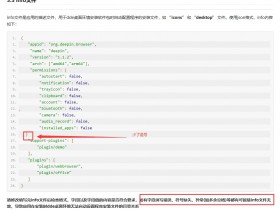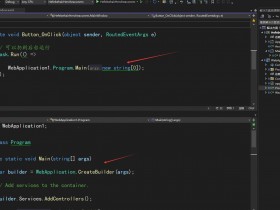- A+
(注:本文是《剖析WPF模板机制的内部实现》系列文章的第二篇,查看上一篇文章点这里)
2. ControlTemplate
ControlTemplate类是最简单的FrameworkTemplate子类,而最常见的ControlTemplate类型变量是Control.Template属性。
上一篇我们提到,FrameworkElement子类要想生成自己的visual tree,就必须自定义一个模板给TemplateInternal属性。一个FrameworkElement子类元素的visual tree完全取决其提供给TemplateInternal属性的实际模板。
我们将看到,作为FrameworkElement的子类,Control除了覆写了TemplateInternal和TemplateCache属性,还新定义了一个ControlTemplate类型的Template属性:
//*****************Control********************
public static readonly DependencyProperty TemplateProperty = DependencyProperty.Register( "Template", typeof(ControlTemplate), typeof(Control), new FrameworkPropertyMetadata( (ControlTemplate) null, // default value FrameworkPropertyMetadataOptions.AffectsMeasure, new PropertyChangedCallback(OnTemplateChanged))); /// <summary> /// Template Property /// </summary> public ControlTemplate Template { get { return _templateCache; } set { SetValue(TemplateProperty, value); } } // Internal Helper so the FrameworkElement could see this property internal override FrameworkTemplate TemplateInternal { get { return Template; } } // Internal Helper so the FrameworkElement could see the template cache internal override FrameworkTemplate TemplateCache { get { return _templateCache; } set { _templateCache = (ControlTemplate) value; } } // Internal helper so FrameworkElement could see call the template changed virtual internal override void OnTemplateChangedInternal(FrameworkTemplate oldTemplate, FrameworkTemplate newTemplate) { OnTemplateChanged((ControlTemplate)oldTemplate, (ControlTemplate)newTemplate); } // Property invalidation callback invoked when TemplateProperty is invalidated private static void OnTemplateChanged(DependencyObject d, DependencyPropertyChangedEventArgs e) { Control c = (Control) d; StyleHelper.UpdateTemplateCache(c, (FrameworkTemplate) e.OldValue, (FrameworkTemplate) e.NewValue, TemplateProperty); }
可以看到,覆写后,TemplateInternal属性返回的就是Template,而Template属性返回的是_templateCache字段,这个字段又是TemplateCache属性的支撑字段,而TemplateCache属性只在StyleHelper.UpdateTemplateCache()方法里被修改过。这个方法的代码如下:
//*****************StyleHelper********************* internal static void UpdateTemplateCache( FrameworkElement fe, FrameworkTemplate oldTemplate, FrameworkTemplate newTemplate, DependencyProperty templateProperty) { DependencyObject d = fe;// Update the template cache fe.TemplateCache = newTemplate; // Do template property invalidations. Note that some of the invalidations may be callouts // that could turn around and query the template property on this node. Hence it is essential // to update the template cache before we do this operation. StyleHelper.DoTemplateInvalidations(fe, oldTemplate); // Now look for triggers that might want their EnterActions or ExitActions // to run immediately. StyleHelper.ExecuteOnApplyEnterExitActions(fe, null, newTemplate); }
这意味着每次更新Control.Template都会相应更新_templateCache,从而FrameworkElement.ApplyTemplate()读到的TemplateInternal的值也就是Control.Template的值。就这样,Control类在无法覆写ApplyTemplate()方法的情况下,实现了模板应用的多态性。值得一提的是,我们后面将看到,这种模式已经成了FrameworkElement子类对虚属性TemplateInternal实现多态性的固定模式。另外,前面我们提到只有4个FrameworkElement的子类覆写了TemplateInternal属性:Control、ContentPresenter、ItemsPresenter、Page,因此可以期望在后面三种类里面也能找到类似的TemplateInternal多态性实现机制。
其他ControlTemplate类型的变量还有Page.Template,DataGrid.RowValidationErrorTemplate等。它们的模板机制与Control.Template大同小异,这里就不一一赘述了。下一篇文章我们将讨论ItemsPanelTemplate类。




